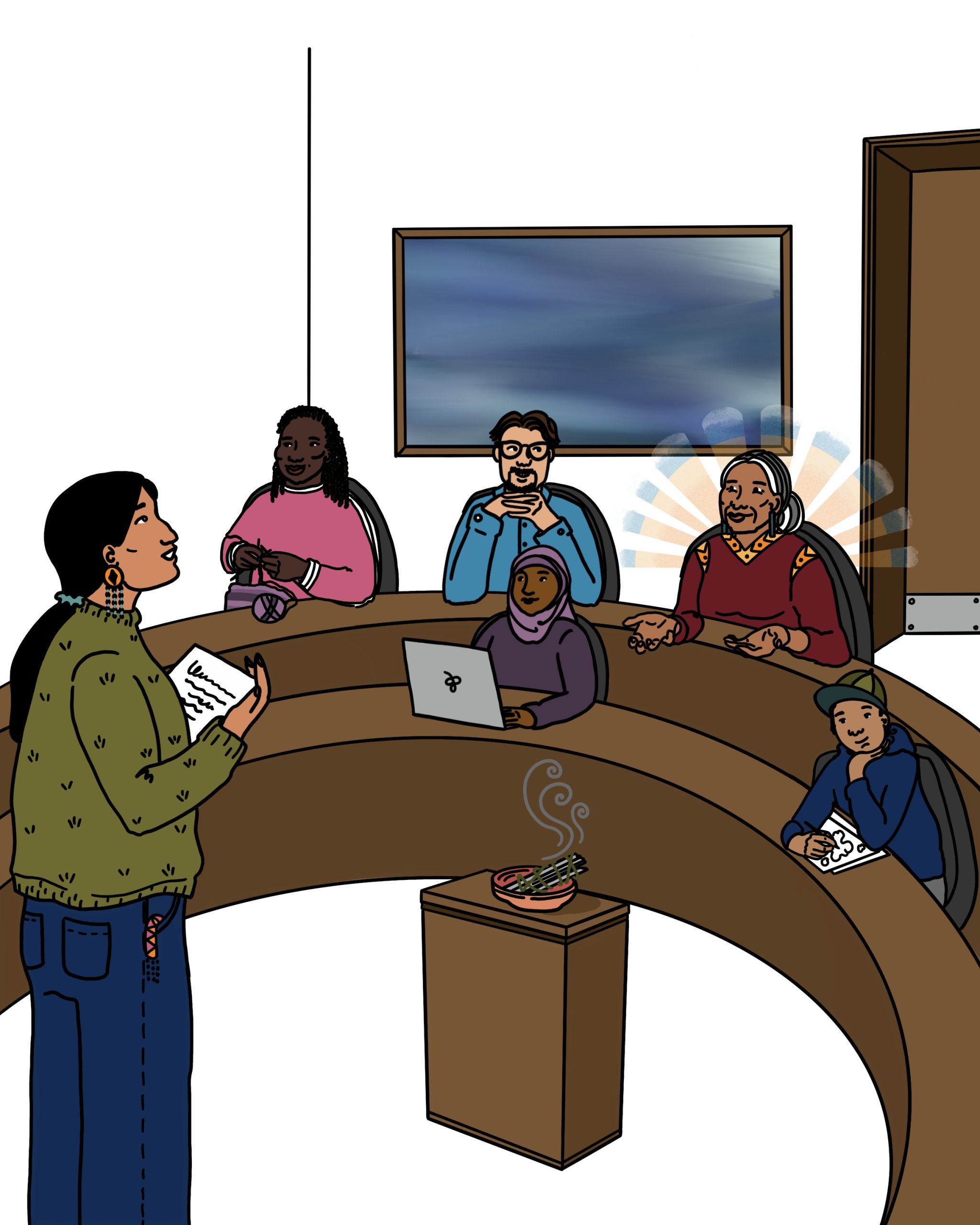Provide In-Class Support

“We are there — in the space and in the moment — with the student.”
—Elder Barb Hulme
“Students are finding their voice and standing strong against the feeling of not being good enough, smart enough … Racism is insidious as repeated phrases are then ingrained in our being.”
—Elder Darlene McIntosh
“We will love and honour all of our children, families, and all of our relatives.”
—Elder Amelia Washington
Reflection Questions
Elders attend classes to support and lift up students, and their gentle presence creates a safer space in the classroom. They also attend classes to share their knowledge, wisdom, and insight, which helps students build relationships with Indigenous people and communities. All students became more culturally competent as a result of the Elders’ teachings.
- What steps can you take to bring Elders into the classroom to enrich teaching methodology and integrate local history?
- What can you do to support bringing traditional medicines (such as smudging or brushing) into the classroom?
- What can you do as an instructor to prepare yourself to share this booklet or Indigenous knowledges and histories in your classroom?
- What are some similarities or differences in your cultural practices in relation to Indigenous practices and ceremonies?

